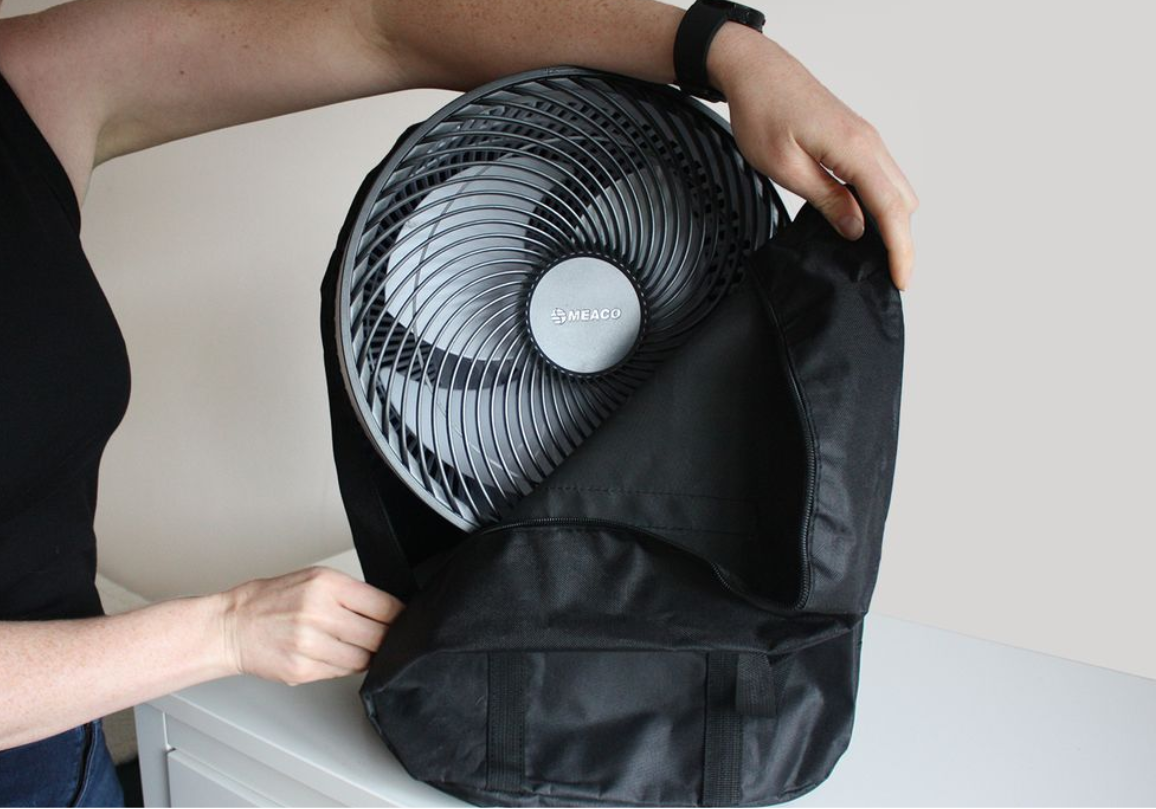Often when people are buying a dehumidifier for the first time one of the features that they look for is a timer. They think that the timer on a dehumidifier will allow them to control when the unit turns on each day and this will be the best way to use their dehumidifier – but that is a myth.
A dehumidifier has something called a humidistat that measures the relative humidity of the air – the amount of moisture in the air that could potentially cause condensation. It is the humidistat, coupled with the setting that you have selected, that decides whether the dehumidifier needs to work or not.
If you restrict the dehumidifier by having it turned off for several hours per day then the humidistat will not be able to do its job. So the unit will not spot that you have had a bath or a shower, or cooked a meal – and as a consequence the relative humidity has increased. This new moisture in your home will be free to do as it pleases and will move around the house until it is absorbed by organic materials such as your wardrobe, clothes, sofa and plaster.
This is exactly what you do not want to happen – and presumably the reason why you bought the dehumidifier in the first place was to stop this sort of thing from happening.
Let the dehumidifier decide
It is much wiser to let the humidistat make the decisions about the level of moisture in the air rather than try and guess yourself.
One of the reasons why people want to use the timer on a dehumidifier to restrict the hours that the dehumidifier runs is because they are worried about the running costs. This is unnecessary. In the UK, dehumidifiers are mostly used as a winter product – all of the energy it uses is returned to the room as heat and heat in winter is a good thing.
By removing moisture from the air, the dehumidifier is helping to reduce your overall energy bills. That’s because there will be less moisture in the air and therefore less work for the heating system to do.
So why is there a timer on a dehumidifier unit?
Good question! The timer is mainly useful for drying washing at minimal cost. Dehumidifiers are great at drying washing. Just pop them next to a clothes horse in a confined space and use the Laundry mode to dry the washing in a couple of hours. The clothes will feel softer than they do when you use the tumble dryer because the dehumidifier does not use heat to dry the clothes, just dry air.
Once you get used to how long it takes to dry your washing, you can leave the timer on for say an hour or two and go off to work knowing that the dehumidifier will work at maximum capacity for a couple of hours and will then switch itself off. Your washing will be dry when you get back in and the timer will have ensured that you have used as little energy as possible to dry that load.
That is what a timer is for!








43 responses
I am very happy with my Meaco ABC 20L duhumidifier, but there is one feature that is missing. I use my Meaco to dry washing. I also have an electricity tariff that is very much cheaper between 11.30pm and 5.30am. I would like to be able to set the machine so that it operates over this time as I am charged 7.5p/kWh vs 28p/kWh at other times. Having a delay start or timer would be very useful as I go to bed well before 11.30pm. I estimate that this would save as much as £40/year.
Francis,
Thank you for your feedback. This model features only a countdown timer, we do have other models with both on and off if you are interested, please contact us. You can also set the countdown timer near the time you wish to activate running and therefore it will run within those hours with your cheaper tariff.
Hope that helps,
Omar@Meaco.
Sadly, the cheap tariff times Ive got is 2am start..
Ped,
Thank you for your comment! If that’s when your rates are cheaper, you can set the dehumidifier to run during those hours to save on costs (only applicable on dehumidifiers with a timer).
Regards,
Omar@Meaco.
I use your Zambezi model to turn it off between 4 and 7pm when the electricity is at it’s highest price (Octopus Agile) and the automatic turn it back on for the remaining hours. Works a treat from my side. Most dehumidifiers don’t have this type of timer, it’s just a countdown timer. Would the moisture not come back out of the soft furnishings once the dehumidifier goes back on?
Dan,
Thank you for your enquiry. If you restrict the run time of a dehumidifier, then yes the humidity that you’ll have been creating during the day (through cooking, boiling the kettle, drying laundry, etc.) will be absorbed by organic materials in your home (clothing, furniture, timbers, papers, etc.) whilst the dehumidifier is turned off. When the dehumidifier is then turned back on, protecting those organic materials within your home becomes a lot more difficult because the moisture is no longer in the air.
Regards,
Omar.
Why on earth would anyone want to control a dehumidifier remotely? We humans have legs that can be employed to walk from room to room!
Hello,
I do agree with what you’re saying and with a dehumidifier two things will always draw you back to the machine:
1. The filter will need to be cleaned on a regular basis.
2. The water tank will need to be emptied.
Even if you run it on continuous drainage, the user will still need to clean the filter.
Kind regards,
Omar.
Just ridiculous that these machines cannot be controlled by smart automation systems. It’s 2023 for heavens sake!
Gareth,
Smart automation does not make as much sense for a dehumidifier as you might believe at first thought.
With a dehumidifier you need to know what the local relative humidity is to make the correct decisions about when to turn on and when to turn off, this is best done by the dehumidifier, in the location that you want to dry. The dehumidifier has an advantage over any third party device in that it has the fan to draw air over it’s sensor so it can sample a larger volume of air than a stand alone thermohygrometer.
The other reason that people want to use a smart device is to limit the number of hours that the dehumidifier runs for. The flaw in that idea is that this does not take into account the level of relative humidity at any one time of day. If you only run the dehumidifier at night for example then the moisture that is generated during the day is allowed to migrate around the home and it will be absorbed by the organic material in the home (floors, walls, furniture, clothes, bedding, paper, books, paintings etc) and when the dehumidifier is turned on at night the moisture will no longer be in the air and the effect of the dehumidifier will be limited, but the moisture will be able to damage of of those materials that have absorbed the moisture during the day.
From a customer survey we know in Britain that less than 10% of customers use continuous drainage, this means that the vast majority are emptying tanks by hand, if you are there with your dehumidifier to empty the water, then again you don’t need smart controls to adjust it.
Hope this helps to understand our logic.
Chris
Thanks for your reply Chris.
I do understand the points that you’ve made.
But here are some items from the Zambezi manual describing its timer:
“This mode is useful to turn Zambezi off after a set period of drying time – for example when drying washing.”
“This mode is useful to turn Zambezi on in a few hours time – for example when you go to bed so that it turns on when you are in a deep sleep.”
It’s easy to imagine many other scenarios when having a machine controlled remotely with smart technology would be useful.
And do you not think that your users might want to use their smart speakers to control their machines?
Gareth,
The problem with third party smart machines is that they use a plug in control device which switches the dehumidifier off at the mains. This prevents the dehumidifier from shutting down properly and safely, this safety concern would be the same for all dehumidifiers from all manufacturers.
The neater solution is to have the controls built in to the machine (as in Zambezi) so that the machine shuts down on it’s own terms.
Having/encouraging customers to use timers to reduce the working hours of a dehumidifier each day does not actually help to control the relative humidity in the home. The problem is that if you run the dehumidifier just at night for example, then all of the moisture that is generated during the day is allowed to float around the house and will be absorbed by the organic materials in the house where it can have a negative effect on their appearance and result in mould growth. When the dehumidifier turns on during it’s allotted hours at night, that moisture will have gone and the dehumidifier will not have anything to do. This is an unseen problem that most people do not think about.
With a dehumidifier you always have to empty the tank and clean the filter on a regular basis, so you will always have to have a hands on relationship with a dehumidifier, it can never be a device that you can only plug in and control remotely via an app.
So although we understand the appeal of apps, we also understand the pitfalls with regards to dehumidifiers and we are also not seeing much demand for one from consumers (yet).
Hope this helps.
regards
Chris
Hi Chris, it might be useful to limit when the dehumidifier boosts its power as electricity is twice as expensive and more polluting from 4-7 pm on most days at the moment. Would there be a way to achieve this?
Ian,
Thank you for your enquiry, this type of programming does not exist, our units work according to humidity, whereby the levels are increased above target it will turn on and work, if all is balanced (which can be achieved by leaving the unit on to decide for itself) then the unit will be in standby mode, regularly checking every 30minutes using a very small amount of wattage, just to run the air over the sensor and get a reading.
Thank you for your feedback & I hope this helps,
Omar.
Why on earth would anyone want to control a dehumidifier remotely? We humans have legs that can be employed top walk from room to room?
Hi Chris, Lots of really interesting advice on here, thank you!
Here’s yet another house; no central heating, wall mounted convector and fan heaters in beds and baths, tho rarely used except in shower/bath-room. Extractors in kitchen,shower and bath all used. House has 4 offset floors with open plan half staircases and large landings separating each floor – the idea was to let warmth move through the house. Kitchen with aga (on always) at the bottom (15.5 degC), then lounge and wood-burner (on evenings), then master bedroom and shower room (13 degC), then, up top, further bedrooms and bathroom (coldest is 11.5 degC). Temperatures for today at 8am – 6 degC and windy outside. Near the top of the open stairway is a pulley clothes airer and in winter we dry laundry inside. The coldest bedroom and bathroom (NE facing) get mouldy if we shut doors to shut the cold out. I’m thinking about the DD8L junior to use on the top landing when I have washing hung up to help prevent all that moisture being taken up by the house/effectively condensing in the coldest rooms. Do you think this is the best solution? Would I be better to use a clothes horse in the bathroom shut in with a dehumidifier (DD8L junior?) Or is dessicant the wrong way to go? We try not to let it get much colder than this!
Thanks for any advice,
Carmen
Carmen,
That sounds like a good plan, I would try the Junior on the landing and leave some of the doors open so that the damp air on that floor can also migrate towards the dehumidifier.
Chris
Morning I am thinking of buying a dehumidifier as I have mould on bedroom wall and on the slope of my ceiling also in window frame. My daughter and her daughter are using this bedroom. There is water droplets dripping from ceiling. I have been told I that I need new roof but my council won’t change it. I myself cannot use that
room as I am asthmatic. I am limited funds as I am on benefits as I am a carer for my autistic adult son also my 79 year old sister as she does not live with me.
What is economical to use as I have a prepayment meter which is already needing a lot of my money.
Which would you advise it has to be quite as well due to my son.
Definitely go for an Arete 12L as it is cheap to run, has a HEPA filter for the mould spores and is very quiet.
I have off peak electricity (Intelligent Octopus) with 7.5p/ kWh 11:30PM – 5:30AM and 40p/ kWh at other times.
120 sqm 4 bed 2 storey house, living areas at 18.5c and other areas at 16, temperatures can be down to 12 or so at night.
Was planning dehumidifier in hall. The house is a 2001 build- pretty well insulated but keeping windows closed causing RH to sit 60 – 75 @ 18 degrees.
I was originally thinking of an Arete 20 or 20l, but a couple of things are making me wonder if the Zambezi is a better fit:-
– The on/ off timer on Zambezi could let me run it at full power in off-peak, only using laundry mode when needed during day. If I set it for say, 50 – 55 hoping this would let RH just dirft up and equalise around house during the day
– The extract of Zambezi actually looks much higher on fan 3- around 7.5 – 8 litres per day, whilst the Arete only looks to extract half of that.
– The Zambezi is using three times as much electricity for double the extract, but my unit cost in those 6 hours is 1/5 of the price.
So the Zambezi could be cheaper to run…but is my plan flawed?
It’s a pity the dehumidifiers don’t have more smart features that allow you to tell them when to just “tick over” or when to run at full pelt. There’s more and more of these smart electricity tariffs with some costing 50p/ kWh is you use between 4:30 and 7:30pm for example, but down at low as 2p/ kWh in the middle of the night (ie Octopus Agile). The latest incentive is National Grid pay up to £3/ day or so if we reduce consumption in the peak te time window when asked.
I’m presuming if I put an external timer switch on an Arete it wouldn’t come on when the power was applied- it needs a button pressed as well?
Will my plan work- ie “sprint” dehumidifying for 6 hours and then hoping the RH will equalise throughout the house during the day?
Chris,
Thank you for your message. Zambezi is the only dehumidifier anywhere in the world to have a built in daily run timer, so if you want to do that Zambezi is the only choice. You should never use a plug in timer with any dehumidifier (this goes for all manufacturers) because you are preventing the dehumidifier from turning off safely.
My personal preference with any dehumidifier is to leave it on 24/7 and set the humidistat to either 50 or 55%rh and let the machine to turn on and off as required. The problem with only running the machine at night is that all of the humidity that is generated during the day might be absorbed by the organic material in the house (walls, clothes, furniture, books, papers etc) and will start to create damp problems because the machine is turned off.
The extraction rate for Zambezi is fairly fixed and does not vary by temperature, so you get circa 3.9 litres in fan speed one (351 watts) and 8 litres in fan speed two (656 watts), whereas the Arete One 20L will give you between 3.4 and 8.5 litres a day between 10 and 20°C but for just 180 to 216 watts).
Wattage is heat, so many people love using Zambezi because it warms the space up as well as drying the air and I think that could well be the point that will help you decide between the two, do you want some extra warmth, or just the cheapest dehumidifier to run.
Chris